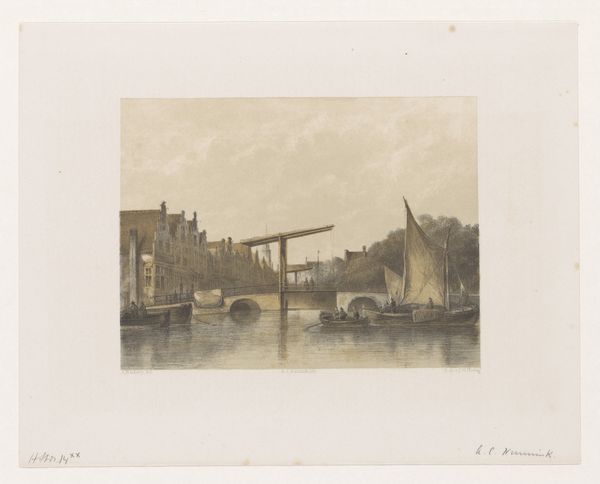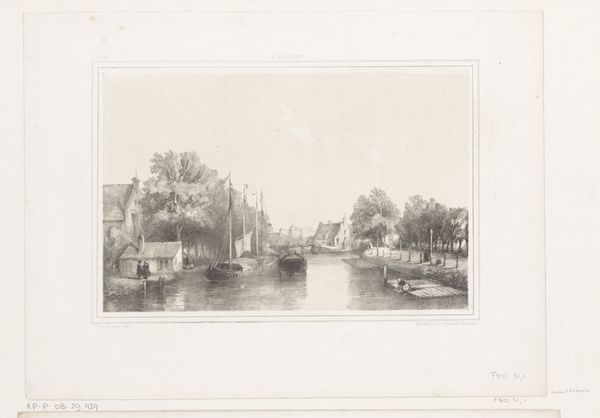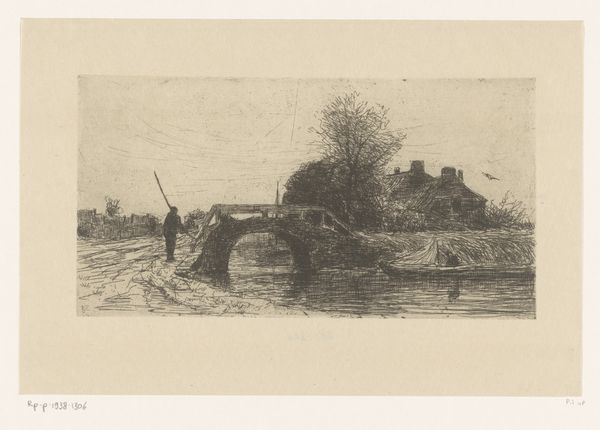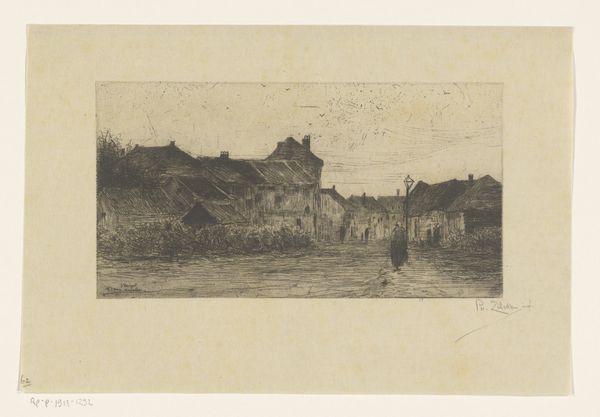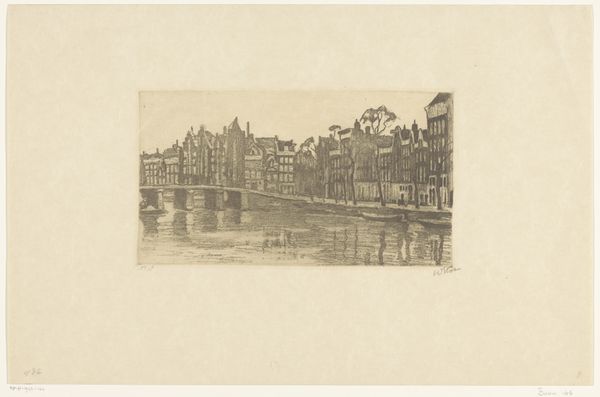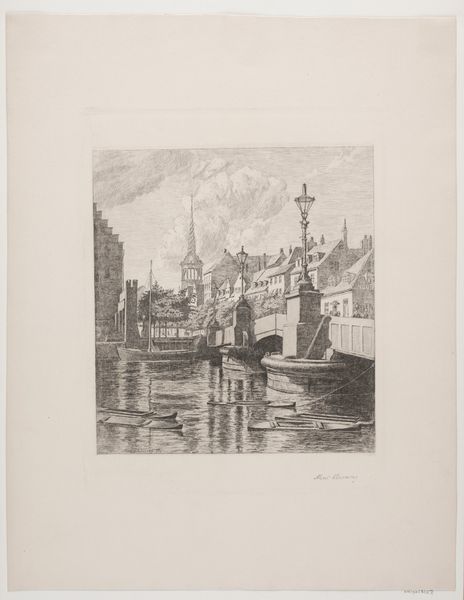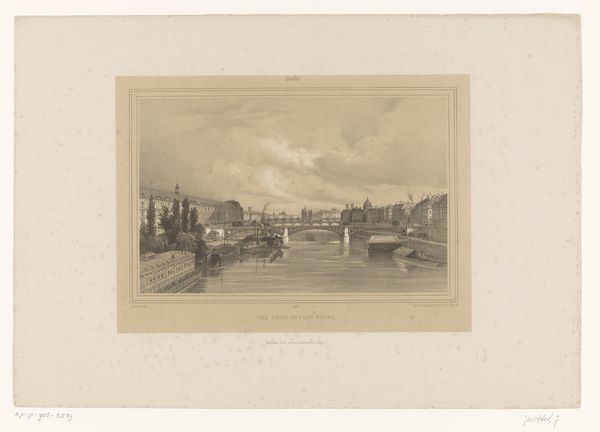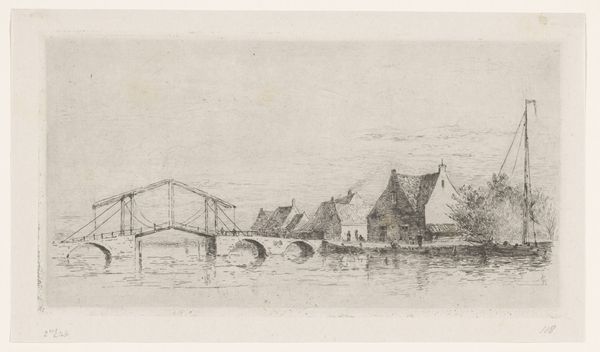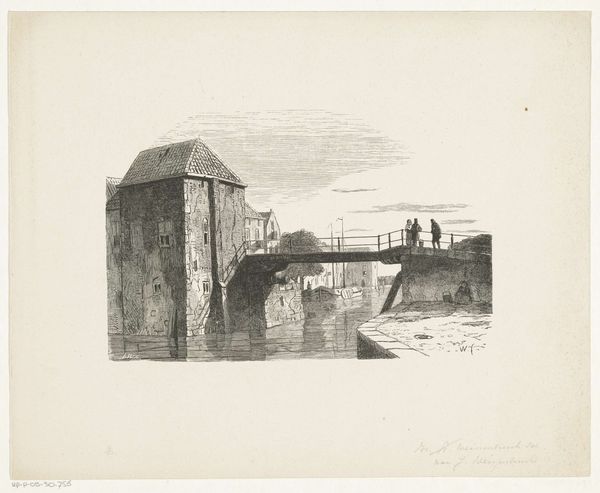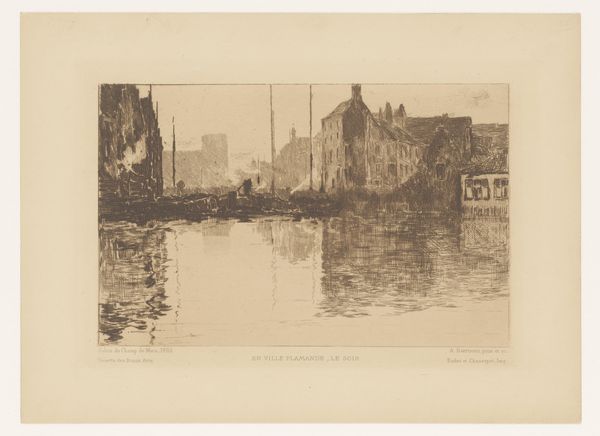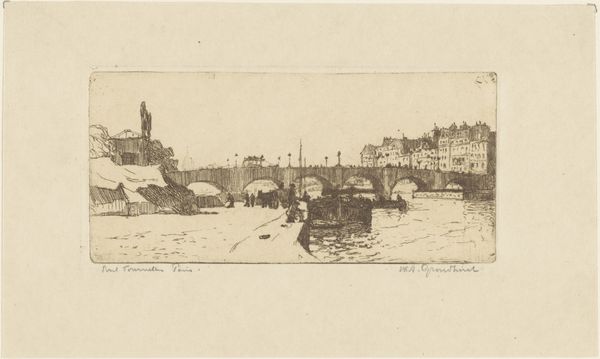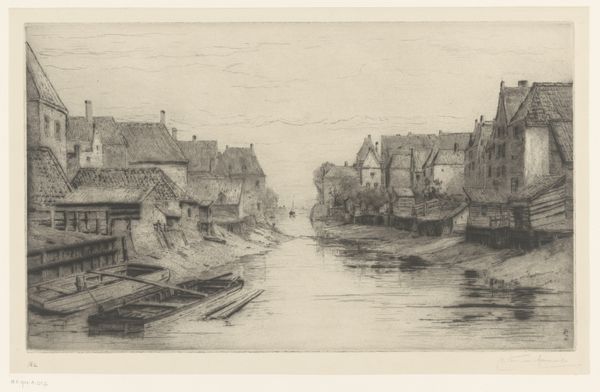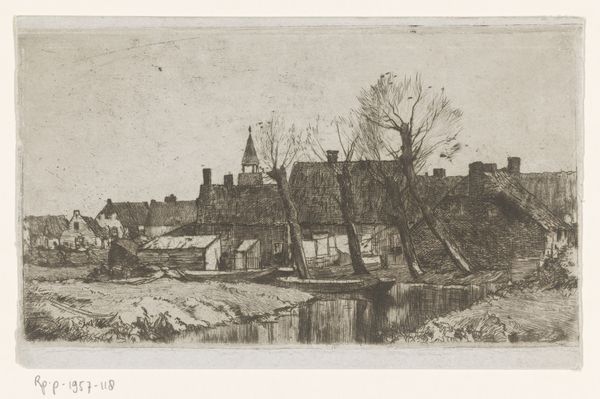
drawing, print, etching, paper
#
drawing
# print
#
etching
#
landscape
#
house
#
paper
#
cityscape
#
realism
Dimensions: height 150 mm, width 213 mm
Copyright: Rijks Museum: Open Domain
Editor: This etching by Carel Nicolaas Storm van 's-Gravesande, titled "Bridge over the Pegnitz in Nuremberg," dates to around 1873. The texture created through the etching process really emphasizes the aged structures in the cityscape, giving it a somewhat melancholic feel. What stands out to you in this piece? Curator: What interests me immediately is the etching process itself. Consider the labour involved: the artist manipulating the metal plate, applying acid, making choices about line weight. This wasn’t merely about representing Nuremberg; it was about engaging with industrial reproduction, right on the cusp of photography's dominance. Editor: That's interesting; I hadn't considered it in terms of industrial processes. Curator: The artist chose etching – a method that allows for the mass production of images. So, we have this tension: a hand-crafted object designed for widespread consumption, representing an old, established city. The bridge itself, rendered using these means, then becomes symbolic not just of Nuremberg but of its position in the late 19th-century market. Do you think the subject of the work is a statement on industrial change? Editor: Perhaps… the choice of the old city architecture rendered via a more modern means really points to a reflection on changing times and also how people will view these bridges going forward, via these artworks as prints. Curator: Precisely! So, we see how the means of production and its historical moment are completely inseparable from its ostensible subject matter. It adds layers of meaning we might miss if we just considered it a quaint landscape. Editor: I never would have considered that! This perspective really emphasizes the value of thinking about how things are made and consumed in art.
Comments
No comments
Be the first to comment and join the conversation on the ultimate creative platform.
